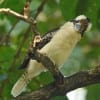 by Jim Stevenson
by Jim Stevenson
Don’t worry, we have lived the day you are about to and it was a good one. 😉 This article is about a few of the primitive birds here in Australia, and a bit about them. Enjoy. Please remember our fall calendar sale, as this one’s our most special. It’s thematic – the best birding areas of Texas and which birds are there. They go on sale right after Labor Day. You can view them here
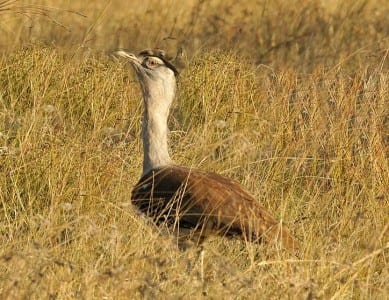
This is one of the largest flying birds on Earth, by weight, the Australian Bustard. They are absolutely huge! They fly pretty well and that’s a great way to escape the Dingos! These live out in the Outback and their plumage camouflages them perfectly. Bustards are mostly African and Australian, a result of developing in Gondwanaland.
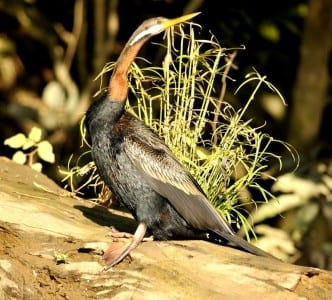
There are four darters around the World, including our Anhinga, but the Australian Darter may be the most beautiful of all. They spear bream-shaped fish and grab mullet-shaped fish (fusiform) with their dagger bills. They often dry their wings after swimming but they can actually take off wet.
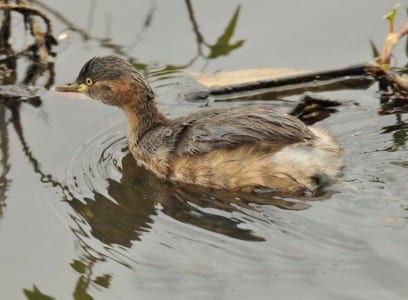
This Australasian Grebe belies the season here – it’s winter! Soon it’ll be spring and his breeding colors will return, at the same time it’s fall where we live in the Northern Hemisphere. Grebes have very little tail, lobed toes, and most have excellent camouflage. They and other swimming birds preen and then rise up in the water and flap. One such individual is on the up next.
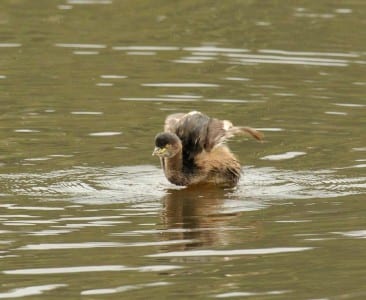
Here is the grebe almost entirely out of the water, flapping his pathetic little wings and shaking off the water. This species even shows a white speculum (secondaries) and various shades of brown. His wing feathers look worn but he’s about a month away from beginning a molt.
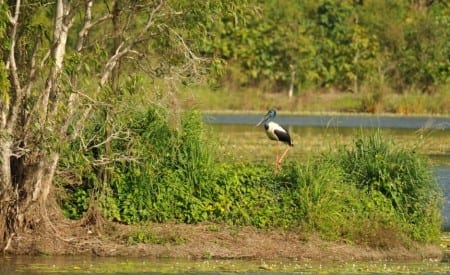
found this scene sort of nice, with a Black-necked Stork (Jabiru) playing king of the Island. This was at the marvelous Catana Wetlands, an area near Cairns that’s been restored and re-built. The Aussies take their wildlife very seriously and have made sacrifices to protect what they have. Ecotourism is especially important near Cairns and the Northern Territories near Kakadu.
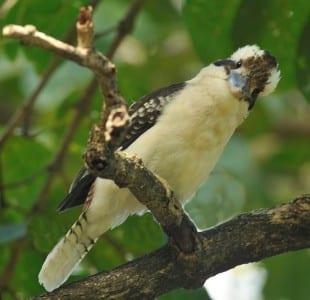
Who sits on the old gum tree? Kookaburras are the ancestors of kingfishers and show it in their beaks. This Blue-winged Kookaburra is eyeballing me from his favorite perch. These birds are confirmed carnivores and won’t hesitate killing one of the country’s highly-venomous snakes. Their calls are one of the most comical and almost hideous in the bird world.
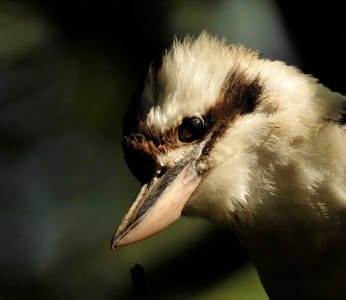
Here is the head of a kookaburra showing the heavy dagger bill and kingfisher-like crest. They also have a killing nail on the end of the beak, not unlike a shrike or flycatcher. Can you think of one of our birds that has a different colored top and bottom mandible? (Black-crowned Night-heron)
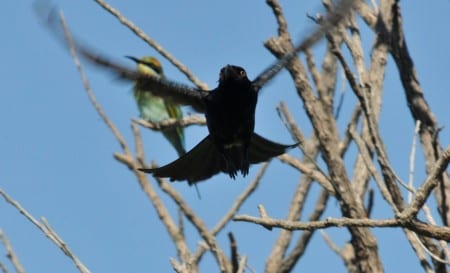
The Spangled Drongo is one of Australia’s most exciting birds. It’s iridescent black with red eyes, and a personality to match. Here he is zipping past a bee-eater so fast the smaller bird has yet to react. Drongos have a peculiar forked tail and a very impressive glossiness. No flying insect is safe around them!
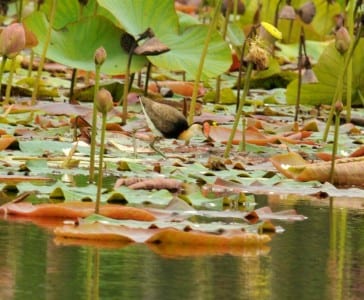
The Comb-crested Jacana is Australia’s answer to Africa’s lily trotter and our gallinule. They walk on long toes that evenly distribute their weight and pick bugs (encrusting organisms, Hap) off the underside of the lily pads. Curiously, males take charge of the young while the female lays more eggs from a different father.
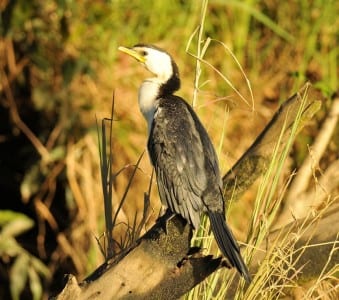
Cormorants are pelican relatives and many species occur around the World. Some are very dark but many are black on top and white underneath. This is the Little Pied Cormorant, even smaller than our Neapolitan Cormorants. These are found in every little pond and ditch and seem quite adaptable. The next picture is a Little Black Cormorant, showing the other color option for this group. These darter-like colors must make them hard for fish to see underwater and the black would also make water evaporate off their feathers faster in the sun.
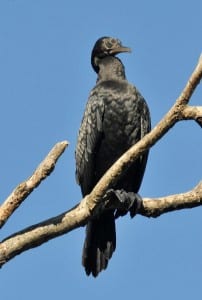
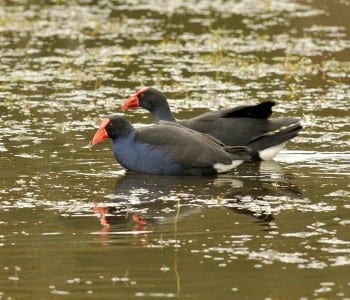
Purple Swamphens are robust rails that seem to be the evil twin of our Purple Gallinule. They are actually introduced into South Florida and we will see them on the GOS Florida Trip in January. They eat mostly invertebrates like insects, spiders and crustaceans. Note the same frontal shield like some other rails.
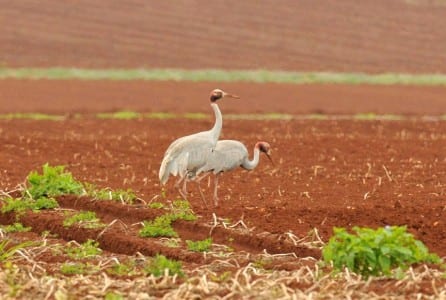
Sarus Cranes are scattered around eastern Australia, working the field like our Sandhills they resemble. They apparently mate for life as we saw a number of pairs and it’s winter.
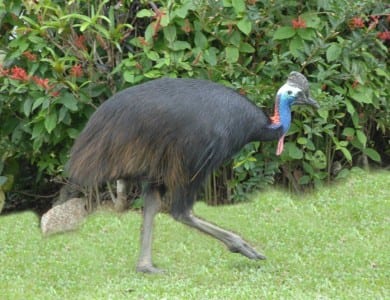
This is the Southern Cassowary, Australia’s most important bird. They wander through the rain forest, depositing seeds they cannot digest, and re-seeding the forest. Australia probably has the oldest rain forest on Earth and it will stop growing if we lose the cassowaries. Currently, there are about 1200 individuals in Australia and some are lost to cars. This individual was wandering through a trailer park at Mission Beach.

 Posted in
Posted in 























